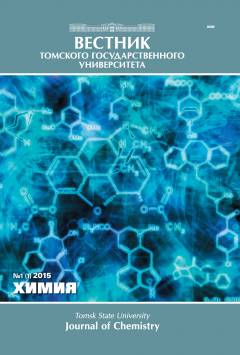Electrophysical properties of composites based on peat and urea
Obtaining solid-state composites based on peat with the use of chemical additives is one of the necessary conditions for the practical application of natural raw materials in different technologies. To study the processes of structurization in the peat-carbamide-water system, the processes of structure formation of composites based on peat and urea as a bonding agent were studied by the method of measuring volume and surface electrical conductivity, The dependence of the electrical conductivity of samples on the concentration of urea, time for structure formation, and temperature processing of the composite were determined. It is shown that the formation of structures proceeds for more than 28 days. In addition, for surface electrical conductivity, extreme dependence on the time of curing of composites is characteristic, and an oscillatory process is observed for bulk conductivity. The fraction of electronic conductivity does not exceed 15%, and for mass transfer in the system, simple and complex ions and charged complexes without charge transfer basically correspond. It is shown that the ratio of volume and surface electrical conductivity (av/as), and values of activation energy (Ev/Es) corresponding to processes of structure formation in the time interval from 0 to 28 days, vary within the limits av/as = (1.43*10'-7.32*10' )/(1.73*10'-6.17*10'), Ev/Es = (87.0-155.5)/(30.5-119.5). Fluctuation in the values of bulk and surface electrical conductivity are caused by the appearance of new intermolecular hydrogen bonds in the peat matrix, the changing nature of the chemical processes and reactions of the acid-base interaction, the change in the concentration of charge carriers and their capture into organomineral complexes, and the exchange interaction of urea with the functional groups ofpeat.
Keywords
композит, торф, карбамид, электрическая проводимость, структурообразование, composite, peat, urea, electrical conductivity, structurizationAuthors
| Name | Organization | |
| Naumova Lyudmila B. | Tomsk State University | naumovalb@mail.ru |
| Gorlenko Nikolay P. | Tomsk State University of Architecture and Building | gorlen52@mail.ru |
| Sarkisov Yuriy S. | Tomsk State University of Architecture and Building | yu-s-sarkisov@yandex.ru |
| Kasizkaya Larisa V. | Henry company | kasitskaya@rogers.com |
References

Electrophysical properties of composites based on peat and urea | Vestnik Tomskogo gosudarstvennogo universiteta. Chimia – Tomsk State University Journal of Chemistry. 2017. № 7. DOI: 10.17223/24135542/7/2
